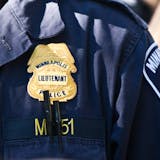A Metro Transit bus pulled up to the 46th Street station in Minneapolis during rush hour one recent morning, and its inhabitants peered at traffic on Interstate 35W inching forward ever-so-slowly toward the heart of the city.
The bus tour organized by the Metropolitan Council was a way of showing how the proposed $150 million Orange Line bus rapid transit project will help alleviate epic traffic on one of the state's busiest transportation corridors. The 17-mile line would link Burnsville to downtown Minneapolis — initially serving some 14,000 commuters a day, and more than 26,000 by 2040.
Slated to open in 2019, the Orange Line would be the fourth BRT project planned in the metro area by the Metropolitan Council in recent years, though nearly a dozen others are in the works. Less expensive and less divisive than light-rail, bus rapid transit is poised to become a more notable force in the Twin Cities commuter network.
So far only one such line is operating. The Red Line, which connects the Mall of America to Apple Valley, opened in 2013. The Snelling Avenue A Line in St. Paul is expected to begin service next year.
The Met Council will make a big push to help fund the Orange and Gold lines, both BRT lines, in the next legislative session. The $485 million Gold Line (or Gateway Corridor) would connect Union Depot in St. Paul to Woodbury, just north of Interstate 94, in 2021.
Both would be funded by state, county and federal sources, and it appears that the funding debate will likely be less acrimonious than those surrounding light rail.
"Some people are a little more supportive of bus transit than light rail due to its cost," said Adam Duininck, chair of the Met Council. "I think this session we will get good bipartisan support [for the Gold Line], and we have strong support along the I-35W corridor."
Mary Liz Holberg, a former legislator and now a Republican member of the Dakota County Board, is a well-known foe of light rail. Her main problem with the Orange Line is that it doesn't stretch far enough — namely to Lakeville.


